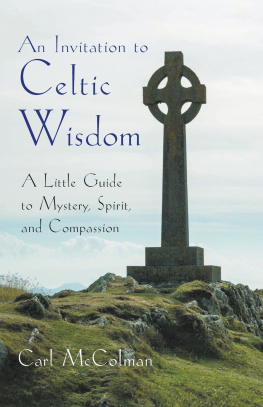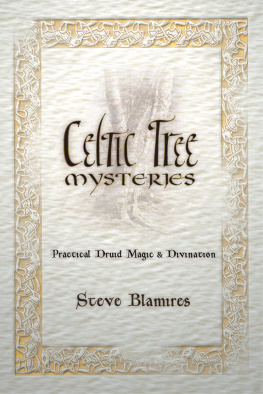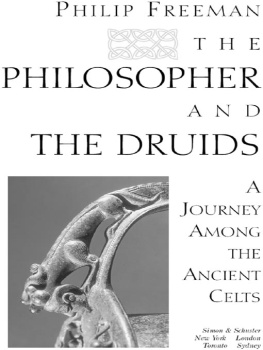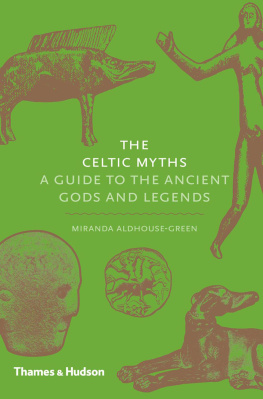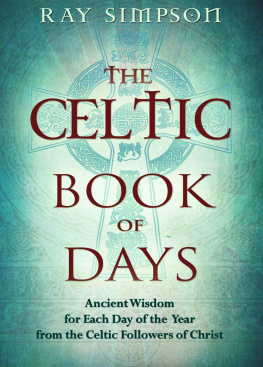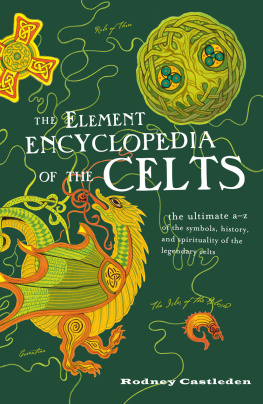celtic wisdom: reference to go
36 Inspirational Legends
who were the celts?
The Celts were a mixed and widespread group of peoples who inhabited a vast band of territory that stretched across Europe and into Asia Minor from about the ninth century B.C. to the fifth and sixth centuries A.D. Common reference to this enigmatic society assumes the Celtic clans of Britain and Ireland, or of mainland Europe, especially Brittany and Spain, but Celts made incursions into northern Italy and, in 387 B.C., sacked Rome. A century later they invaded Greece and plundered the famous oracle shrine at Delphi.
warriors, heroes, bards, and druids
Romantic descriptions of this multifaceted culture have survived the centuriesstories of fierce warriors and dauntless heroes, supernatural women, soulful bards, and wise druids. Greco-Roman authors exalted the Celts as unsurpassable warriors, renowned for their courage. Likewise revered were the bards, or poets, the keepers of tribal wisdom who were able to recount the past as well as to foretell the future.
Perhaps most fascinating is the mysterious society of druids, the Celtic priests and magicians whose mystical wisdom encompassed the healing properties of plants, transformation, and fertility, and the ability to foretell the future. Ancient accounts of the druids are sketchy, but there is plenty to pique the imagination. For example, Merlin, magician advisor to King Arthur, is legendary as one of the most talented and powerful druids, and Merlins story, for some audiences, outshines Arthurs.
celtic and christian myth intertwine
The ancient Celts had no written language, and we are dependent on later sources for our knowledge of their culture. Much of the body of Celtic wisdom is found in accounts of the Christian period and in the tales and poems of the Middle Ages. Christian scribes were the first to record Celtic myths: stirring tales of historic rulers and fictional heroes, as well as poems about the symbolism of nature.
The legend of King Arthur exemplifies the way in which pagan and Christian elements combine in medieval Celtic storytelling. Arthurian legend recounts how the young king founded the Round Table and summoned the worlds finest knights to join him in the battle against eviland furthermore launched a quest for the mystical Holy Grail, a chalice used by Christ and his disciples at the Last Supper.
tales of ireland and wales
Arguably, the richest literature is found in the great epic narratives of Ireland and in the folktales of Wales.
From Ireland we have tales of courage and conquest in the battles of Moyturraconflicts between two armies of supernatural beings with a cast of heroes (such as Cuchulainn and Fergus), royals (such as King Ailill of Connacht and his queen, Maeve), and various deities. Other Irish stories tell of the hunter poet Finn, who acquired the gift of prophecy by imbibing the drink of the Otherworld (the magical land of afterlife), and of fantastic voyages made to the Otherworld by seafaring adventurers such as Brendan and Mael Duin.
The Welsh folktales, compiled in the nineteenth-century masterpiece Mabinogion, emphasize magic and transformation. The plots are intricate, involving jealousy, seduction, elopements, and spells. The hero Peredur, featured in one of the legends in this book, is the Welsh version of the Arthurian knight Perceval.
discover celtic wisdom
We know enough about the Celts to be moved by the wisdom underlying their myths and symbols. The endless knot, for example, is a symbol of eternity that holds meaning for us todayand is often used as a focus for meditation. In the myths, there are incidents and encounters whose significance is profound. In reading about heroes such as Peredur, bards such as Taliesin, or druids such as Merlin, we experience humanitys desires, fears, and hopes.
This unique guide imparts the relevance of Celtic lore to our present-day lives. By contemplating the symbols and translating the messages of the stories into contemporary terms, we can enrich our minds and spirits. Celtic culture has much to teach us. Absorb its wisdom. Heighten your imagination with the inspiring and timeless insights of the Celts.
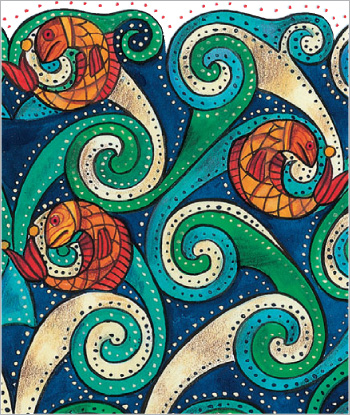
waters soothing powers
Water held a special magic for the Celts as a symbol of vitality and inspiration. Its ability to capture lightsuch as a reflection of the setting sunwas taken as proof of supernatural properties. Wells and springs were thought to be charged with magic power; lakes and rivers were the dwelling-places of otherworldly beings, like the Lady of the Lake in Arthurian legend.
Take time to meditate by a river, lake, or stream. Invite the effervescent power of water to revitalize your spirit. Let every ripple and calm contribute its soothing blessing to your deepening inner contentment.

the wise child
Riding one day, Prince Elphin discovered a mysterious black bag by a river. He was amazed to find a young child insidebeautiful, innocent, but with a wise look on his face. Struck by the brightness of the childs forehead, Elphin took the boy into his household and named him Taliesin, meaning radiant brow. The boy grew to become the greatest of the Welsh bards.
When you meet a child, attune yourself to his or her unspoiled perceptions and potential. Converse with the young one and listen attentively. You may be surprised at the wisdom you glean from such interactions.

the beauty within
Five brothers were lost in a forest. One went to find water and reached a well, where an ugly crone demanded a kiss in return for a bucketful. The brother refused and returned empty-handed, as did the next three eldest in turn. When his turn came, the youngest brother kissed the hag, and she became beautiful. She rewarded him with the promise that he would one day be King of Ireland.
True nobility discerns beyond appearances. Challenge yourself to apply this guiding principle in your personal and professional encounters. Give thanks for the beauty and meaning you discover under the surface and for your ability to appreciate such rewards.

the feast of lughnasa
Lughnasa, named after the Irish god Lugh, was a joyous harvest festival held on August 1. (In Christian times it became known as Lammas.) Feasting, dancing, and general revelry went on for two weeks either side of the actual day. Games were played in a spirit of energetic teamwork.
During the season of Lughnasa, invite family and friends to your version of a barn dance, with wine (or juice) and beer (or bread) to symbolize the grape and the grain. Play Celtic or other joyful music and entice everyone, young and old, to dance in celebration of the bounty of life.

the sword in the stone
King Uther Pendragon plunged a sword into a stone and decreed that whoever freed the sword would inherit the throne. Knights tried their strength in vain. A young squire, chastened for forgetting his masters weapon, discovered the sword and deftly removed it from the stone. So it was that the good King Arthur won his rightful title.


